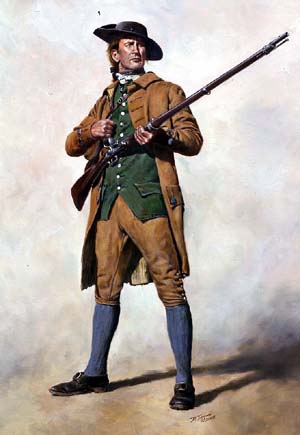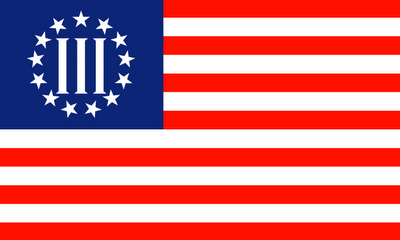A patriot must always be ready to defends his country against his government. -- Ed Abbey
Once upon a not so long ago being called a Patriot was meant as a compliment.
Now, one man speaking out against the government is a danger to the republic itself.
Three guys speaking out against the government in a bar is a Movement.
If they're in a gun club or have self defense pistols on their hips and it's a bonafide armed militia you betcha.
Imagine what they must think about folks like you and me.
NPR:
Report: 'Explosive' Growth Of 'Patriot Movement' And Militias Continues

"Patriot movement groups" in red. Militias — armed wings of such organizations — in gray.
An enormous surge in the number of groups that "see the federal government as their primary enemy" and in some cases have militias as their "armed wings" continues, the Southern Poverty Law Center reports today.
According to the civil rights organization's researchers, the rapid growth in such "Patriot movement" groups, which began when Barack Obama ran for president in 2008, has mushroomed since. They estimate there are now nearly 10 times more Patriot and militia organizations — 1,274 in all — in the U.S.
Mark Potok, a senior fellow at the law center, told us this morning that Obama's candidacy and election has fueled the growth in groups that believe the federal government will "impose martial law ... confiscate guns ... open concentration camps run by FEMA ... and force the U.S. to become a socialist state."
"It's a conspiracy-driven movement," he added.
Also driving the growth in such groups: the recent recession, weak recovery and increasing "income inequality."
In its report, the center writes that:
"The Patriot movement first emerged in 1994, a response to what was seen as violent government repression of dissident groups at Ruby Ridge, Idaho, in 1992 and near Waco, Texas, in 1993, along with anger at gun control and the Democratic Clinton administration in general. It peaked in 1996, a year after the Oklahoma City bombing, with 858 groups, then began to fade. By the turn of the millennium, the Patriot movement was reduced to fewer than 150 relatively inactive groups.
"But the movement came roaring back beginning in late 2008, just as the economy went south with the subprime collapse and, more importantly, as Barack Obama appeared on the political scene as the Democratic nominee and, ultimately, the president-elect. Even as most of the nation cheered the election of the first black president that November, an angry backlash developed that included several plots to murder Obama. Many Americans, infused with populist fury over bank and auto bailouts and a feeling that they had lost their country, joined Patriot groups."
The center's researchers report there's been slower growth in the number of "hate groups" across the nation — organizations that focus their anger on specific types of people and "propagate known falsehoods." There were an estimated 1,018 hate groups at the end of 2,011, up from 1,002 the year before.



- Southern Poverty Law Center Seems To Think Pamela Geller Is To Blame For The San Bernadino Jihadist Massacre
Scum From the Intelligencer: The number of hate groups in the United States is on the rise, according to a study by the Southern Poverty Law Center. Extremist groups in 2015 numbered 892 — up 14 percent from the 784 in 2014, the study claims. Pennsylvania...
- The Left Grows More Obnoxious Than Ever-dialectic/false Framing
Vox: An expert on right-wing terrorism explains the militia movement behind the Oregon takeoverAnd who is this expert? Daryl Johnson saw this coming. In 2009, as an analyst at the Department of Homeland Security, Johnson wrote a report arguing that the...
- Southern Poverty Law Center Calls Arizona Border Militia "neo-nazis"
No, Mr. Mark Potok of the Southern Poverty Law Center's Intelligence Project did not specifically designate each and every volunteer "militia" member patrolling the Arizona border as "people who wear swastikas on their sleeves". However, Mr. Mark...
- Yup, Definitely Hit A Nerve. . .
Daily Caller.com h/t Dr Bulldog Labor union money linked to anti-Tea Party Web site Posted By Alex Pappas On January 29, 2010 @ 5:29 pm Organized labor may be putting their dollars behind an online effort to take down Tea Party groups and their “radical...
- Ready To Revolt: Oath Keepers Pledges To Prevent Dictatorship In United States
Group asks police and military to lay down arms in response to orders deemed unlawful From this morning's Drudge (via Review Journal): Depending on your perspective, the Oath Keepers are either strident defenders of liberty or dangerous peddlers of...
